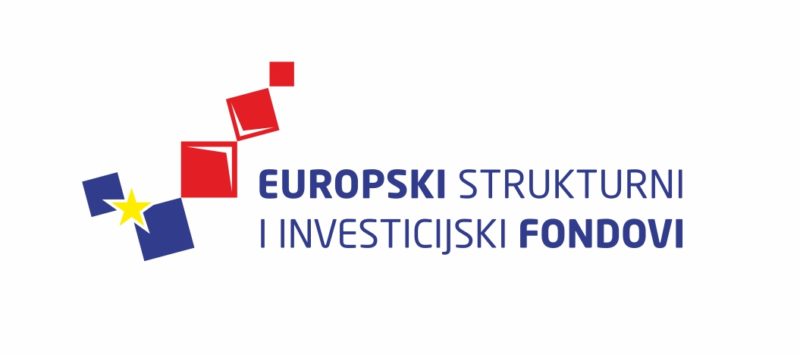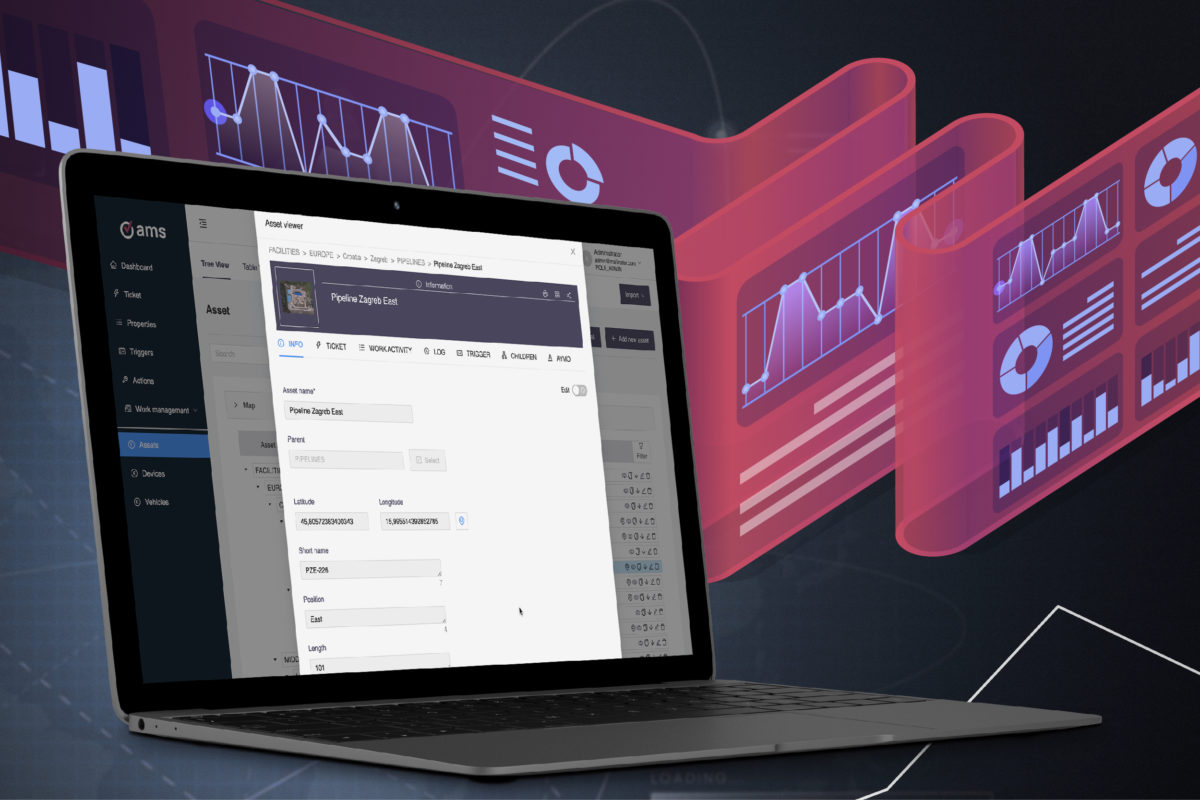The lack of a proper asset management system can lead to potential disasters, causing harm to employees and the environment and considerable financial loss. An effective asset management system gives companies greater control over their assets while maintaining compliance with regulatory requirements.
The Asset Management System (AMS) emerges as a web application that provides companies with a detailed view of their assets and facilitates streamlined management of tasks and employees related to daily operations.
In this article, we will delve into the various features that make AMS an indispensable tool for businesses seeking effective asset tracking and comprehensive operational oversight.
What is an Asset Management System?
An Asset Management System (AMS) is a comprehensive software solution designed to assist organizations in efficiently managing and tracking their assets throughout their lifecycle. Assets can include many items, such as physical equipment, machinery, IT hardware, software, vehicles, pipelines, and even intangible assets like patents and licenses.
The primary goal of an Asset Management System is to provide organizations with a centralized platform for organizing, monitoring, and optimizing their asset-related processes.
Key features of an Asset Management System include:
- Asset tracking: The system lets organizations keep a detailed record of each asset, including its location, condition, maintenance history, and other relevant information.
- Categorization and classification: Assets are categorized and classified based on various criteria. This makes it easier for users to manage and retrieve information efficiently.
- Maintenance and workflow management: AMS helps schedule and manage maintenance tasks, ensuring that assets are properly serviced to maximize lifespan and minimize downtime.
- Security and compliance: Many AMS incorporate security features to control access to sensitive asset information. Compliance with industry regulations can also be integrated into the system.
- User access control: AMS often supports role-based access control, allowing different levels of access for various users within the organization based on their responsibilities.
- Reporting and analytics: The system provides tools for generating reports and analyzing asset utilization, performance, and overall organizational efficiency data.
- Mobile accessibility: Some AMS are designed to be accessible on mobile devices, allowing users to track and manage assets remotely.
The overarching goal of an Asset Management System is to help organizations make informed decisions about their assets, enhance operational efficiency, reduce costs, and ensure compliance with relevant regulations. AMS is particularly valuable in industries where efficient asset utilization and maintenance are critical, such as manufacturing, healthcare, IT, oil and gas, and utilities.
AMS solution by Feromihin
Asset Management System is a structured system designed to oversee and supervise an organization’s resources, encompassing stationary and mobile assets. The primary objective is to enhance the accuracy of recording each resource’s present condition and historical data, ultimately facilitating more effective planning for preventive or predictive maintenance activities.
The system encompasses the inclusion of all company resources (assets). Examples of resource groups managed through AMS include:
- Physical facilities, including technological and business infrastructure, as well as routes. Equipment within individual facilities, such as pipes, reducers, filters, valves and actuators, safety valves, pressure gauges, corrosion protection equipment, PLC, batteries, power supply units, tables, cabinets, air conditioners, ramps, fences, cameras, and more.
- Mobile equipment, ranging from cars and tools to measuring equipment, mobile phones, protective gear, and other relevant items.
- Human resources, covering personnel-related information within the system.
- Intellectual property, including licenses and other forms of proprietary assets owned by the company.
Main features and functionalities of the AMS
Security measures
One of the critical aspects of the AMS application is its commitment to ensuring the security of sensitive company data. Upon user registration, the system enforces stringent password policies, requiring each user to set up a personalized password.
For an added layer of protection, AMS supports two-factor authentication. It requires entering a one-time password (OTP) generated by a designated application. Collectively, these security measures create a robust shield against unauthorized access.
Asset categorization and characterization
Recognizing that companies possess a mix of tangible and intangible assets, AMS simplifies their tracking through efficient categorization. Administrators can create asset categories, facilitating a concise overview of the company’s diverse holdings.
Each asset is characterized by distinctive traits known as Properties within the AMS application. It allows for the recording of detailed information such as purchase dates, geolocation coordinates, brand names, and serial numbers.
Calendar overview and task management
AMS has introduced a Calendar section for a clear overview of all planned activities and tasks. The system supports automated task creation, tasks for defined actions, meta-tasks for scheduled activities, and notes for forewarnings.
The ability to adjust dates of completion without switching sections provides flexibility. The Calendar offers a concise overview of planned work and allows easy adjustments, ensuring an organized and efficient workflow.
Printable components
Recognizing the limitations of being a web-only application, AMS addresses the need for offline access by allowing users to print essential components. This feature proves invaluable for asset field inspections and task completions in areas with limited or no connectivity.
The printed components, equipped with QR codes, enable users to update data upon returning to headquarters. This ensures a seamless integration of offline and online workflows.
Admin panel and recycle bin
The Admin Panel and Recycle Bin are accessible only to users with admin roles. It offers insights into user actions and facilitates data recovery. The Admin Panel provides a detailed log of alterations made to the application. This includes time logs, entity details, and user information.
The Recycle Bin streamlines restoring deleted entities, providing a safety net for accidental data loss.
Multilingualism
In recognition of the global nature of businesses, AMS supports multilingualism, making it accessible to a diverse range of users. The application’s interface and functionalities are available in multiple languages. The plan is to add languages based on user preferences continually.
Advantages of AMS
The Asset Management System (AMS) offers many advantages that distinguish it as a cutting-edge solution in asset management.
Here are some notable features that minimize financial constraints, ensuring business cost-effectiveness:
- use of license-free databases (DB),
- operating systems (OS),
- web servers, and other technologies
AMS benefits unlimited users with a single license, providing scalability without incurring incremental licensing expenses. The application is hosted on a central server, granting accessibility from any device within the organization and fostering seamless collaboration and information flow.
The user interface is intuitive and user-friendly. This adaptability ensures that individuals at all levels of technical proficiency can harness the power of AMS to enhance their asset management processes effortlessly.
Keep track of your assets anytime and anywhere
Implementing an Asset Management System is crucial for oil and gas businesses looking to improve safety measures, manage costs better, comply with regulatory requirements, increase efficiency, and make informed decisions.
The Asset Management System empowers companies to manage their assets effectively, increasing productivity and profitability. This way, managers can focus more on driving growth by investing in new equipment at the right time, reducing downtime due to maintenance issues or equipment breakdowns, and improving efficiencies across operations.
The Asset Management System (AMS) by Feromihin emerges as a comprehensive solution for companies seeking efficient asset tracking, task management, and statistical oversight. Its adaptable nature, robust security measures, and user-friendly features position AMS as a one-stop-shop application for businesses worldwide.
Looking for a customizable application for controlling and managing a company’s assets and staff? Reach out to us and let AMS optimize your business workflow and enhance overall efficiency.






 Hrvatski
Hrvatski